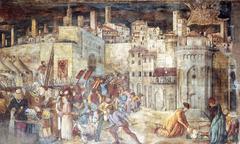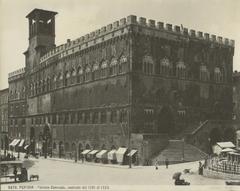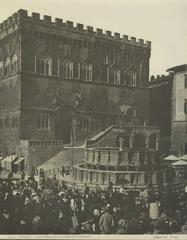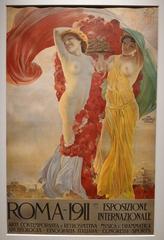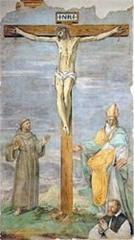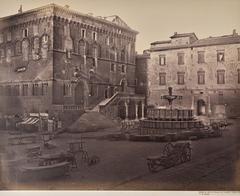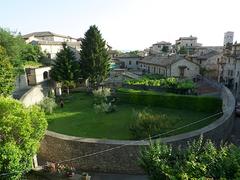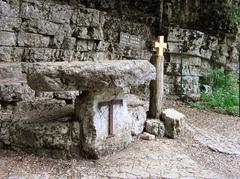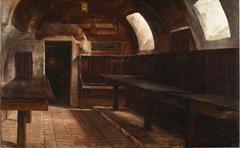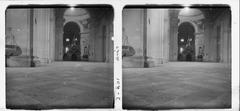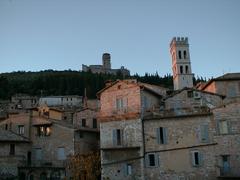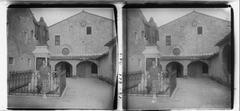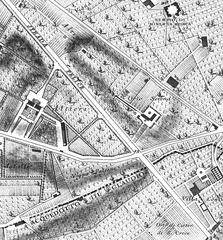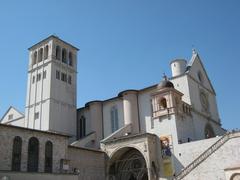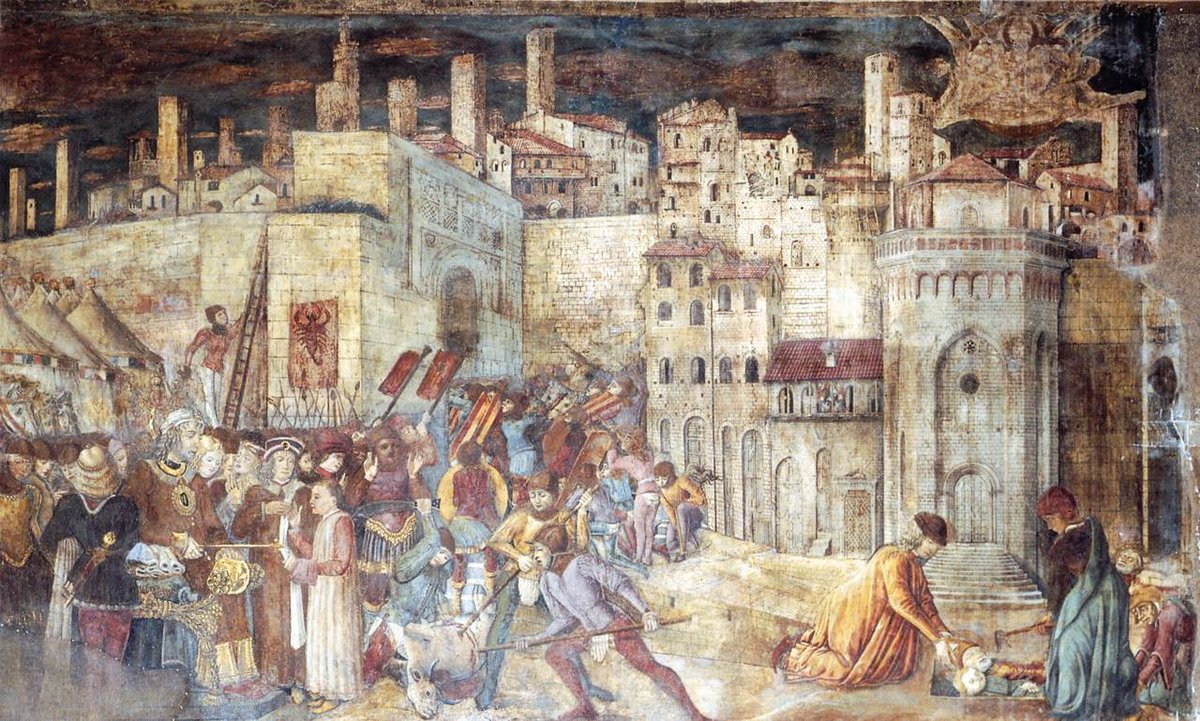
Palazzo dei Priori Assisi: Visiting Hours, Tickets, and Historical Guide
Date: 15/06/2025
Introduction
Centrally located in Assisi’s vibrant Piazza del Comune, the Palazzo dei Priori stands as a distinguished symbol of the city’s medieval and Renaissance history. Originally constructed in the 14th century as the seat of the Priori—Assisi’s elected magistrates—the palace has witnessed centuries of civic evolution, architectural transformation, and community life. Its storied rooms, historic loggia, and iconic façade continue to embody Assisi’s traditions of governance, social welfare, and artistic patronage.
This comprehensive guide details everything you need to know for a memorable visit to the Palazzo dei Priori: up-to-date visiting hours, ticketing information, accessibility, and nearby attractions. Whether you are a history enthusiast, architecture lover, or curious traveler, discover how this landmark bridges Assisi’s past and present.
For official updates and further planning resources, consult Assisi Itinerari, Umbria Tourism, and Visit Assisi.
Table of Contents
- Introduction
- Historical Overview
- Architectural and Artistic Heritage
- Visiting Hours and Ticket Information
- Accessibility and Visitor Tips
- Guided Tours and Events
- Nearby Attractions
- Photography and Facilities
- Travel Tips
- Frequently Asked Questions (FAQ)
- Conclusion
- References
Historical Overview
Medieval Origins and Civic Role
The Palazzo dei Priori was established as the center of Assisi’s civil administration in the early 14th century, with the Priori governing from 1330 onward (keytoumbria.com). Initially, the Priori purchased a house on the main square from the influential Bardi family in 1337, marking the transformation of the building into the city’s political hub (Assisi Itinerari). The palace’s location next to the Palazzo del Popolo and Temple of Minerva reflects its centrality to Assisi’s political and social life.
Renaissance Restorations and Social Functions
Palazzo dei Priori underwent significant expansion and Renaissance-style restoration during the late 15th century under Pope Sixtus IV. The ground floor loggia became home to the Monte di Pietà, a charitable pawn institution founded in 1468 to combat usury and support the city’s poor, illustrating the palace’s dual civic and social mission.
Civic Identity and Cultural Legacy
Throughout its history, the palace has hosted council meetings, judicial proceedings, and ceremonial events. Architectural emblems and frescoes highlight the influence of patrons such as Cardinal Latino Orsini and Cardinal Giovanni Battista Savelli, as well as the incorporation of Assisi into the Papal States (keytoumbria.com). The building’s ongoing municipal function connects today’s visitors to over seven centuries of civic tradition.
Architectural and Artistic Heritage
Structure and Layout
- Façade and Exteriors: The irregular façade is a result of centuries of expansions, integrating multiple medieval buildings and crowned with heraldic plaques commemorating key historical figures and events.
- Loggia and Vaulted Passageways: The ground floor loggia, once a site for artisan activity, and the vaulted Arco dei Priori archway connect the palace to the city’s old street network.
- Council Chambers: The Sala della Conciliazione and Sala del Consiglio are adorned with frescoes and heraldic symbols celebrating Assisi’s civic history (Umbria Tourism).
- Volta Pinta: Beneath the palace runs the Volta Pinta, a corridor decorated with 16th-century frescoes that blend civic and artistic themes.
Art Collections
- Pinacoteca Comunale: The palace houses the municipal art gallery, showcasing Umbrian painting and rare secular frescoes from the 13th century.
- Decorative Details: Allegorical frescoes and painted ceilings in council halls represent virtues and commemorate notable citizens.
Visiting Hours and Ticket Information
- Opening Hours: The palace is typically open to visitors from 9:00 AM to 6:00 PM, Tuesday through Sunday. Last entry is generally 30 minutes before closing. Hours may vary for public holidays or special events, so always check the official tourism website in advance.
- Admission: Entry is usually free during public events, while access to the Pinacoteca or guided tours generally requires a ticket (about €5 for adults, with discounts for students and seniors). Tickets can be purchased online or at the entrance.
- Guided Tours: Available in multiple languages and highly recommended for those seeking deeper context. Advance booking is advised, especially during peak seasons.
Accessibility and Visitor Tips
- Physical Accessibility: The ground floor and main entrance are accessible, but some upper floors and historic sections may be challenging for visitors with mobility impairments. Contact the Assisi tourism office ahead to plan accessible routes.
- Facilities: As a working municipal building, visitor amenities are limited (no cloakrooms or cafés inside). Public restrooms and numerous cafés are available in Piazza del Comune.
- Photography: Photography is generally allowed in public areas, though restrictions may apply in exhibition spaces or during official ceremonies. Always check onsite signage.
Guided Tours and Events
Access to many rooms is often linked to special exhibitions, cultural events, or festivals such as Calendimaggio di Assisi in May. These occasions provide opportunities for guided tours and deeper insights into the palace’s history. The Assisi Welcome Card and local tourism offices offer up-to-date schedules for tours and events.
Nearby Attractions
- Temple of Minerva: A spectacular Roman temple converted into a church, located on the same square.
- Torre del Popolo: The adjacent civic tower, offering panoramic views when open.
- Palazzo del Capitano del Popolo: Another key medieval civic building nearby.
- Basilica of St. Francis: The world-renowned UNESCO site is a short walk from Piazza del Comune.
Photography and Facilities
- Recommended Photo Spots: The Palazzo’s façade, the bustling Piazza del Comune, and views from Torre del Popolo offer excellent photo opportunities. Early morning or golden hour lighting enhances the building’s stonework.
- Facilities: No souvenir shops or food services within the palace, but plenty of options are available in the square and neighboring streets.
Travel Tips
- Getting There:
- By Train: Assisi’s train station is in Santa Maria degli Angeli; regular buses and taxis connect to the old town (Nomads Travel Guide).
- By Car: Parking is available outside the historic center, with shuttle buses or escalators for uphill access.
- On Foot: The palace is centrally located and accessible from all main sites.
- Best Time to Visit: Spring and autumn offer pleasant weather and fewer crowds. Summer is busier; winter is quieter but may feature reduced hours.
- Duration: Allow 30–60 minutes for the palace itself; combine your visit with other Piazza del Comune landmarks for a fuller experience.
Frequently Asked Questions (FAQ)
Q: What are the current visiting hours for Palazzo dei Priori?
A: Typically 9:00 AM to 6:00 PM, Tuesday–Sunday, but always verify on the official tourism website for updates.
Q: Do I need a ticket to enter?
A: Entry is often free during public events; however, the Pinacoteca and guided tours require a ticket.
Q: Is the palace accessible for people with disabilities?
A: Some areas are accessible; contact the Assisi tourism office for detailed information.
Q: Are guided tours available?
A: Yes, in various languages, with advance booking recommended.
Q: Can I take photos inside?
A: Generally yes, except in certain exhibition areas or during official events—always check with staff.
Conclusion
The Palazzo dei Priori is a living testament to Assisi’s civic pride, historical resilience, and artistic achievement. Its halls and façades connect visitors to centuries of governance, social innovation, and public celebration. By planning ahead—checking visiting hours, booking guided tours, and combining your visit with the many attractions on and around Piazza del Comune—you’ll experience the very heart of Assisi’s past and present.
For the most up-to-date information, detailed audio guides, and travel tips, download the Audiala app and connect with Assisi’s vibrant history. Follow us on social media and consult official tourism resources for a seamless and enriching visit.
